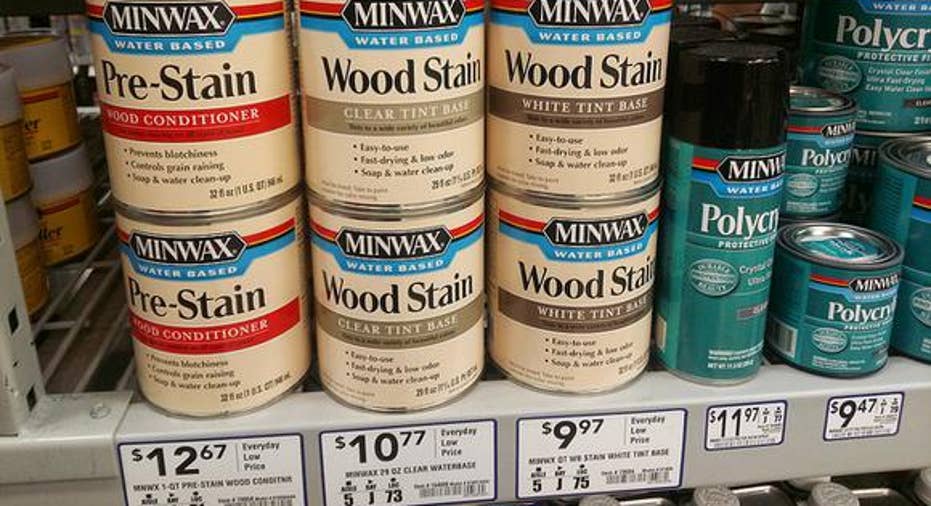How Risky is Sherwin-Williams Stock?

When you think of quintessential American companies, centuries-old global behemoths likeCoca-ColaandProcter & Gambleprobably come to mind. But TheSherwin-Williams Companyarguably deserves just as much of a place on that list.
Like Coke and P&G, The paint-and-coating specialist dates back to the 1800s. Founded in 1866, it's also a member of the vaunted S&P 500Dividend Aristocrats, having raised its dividend for 38 years in a row.
That list is essentially synonymous with stability in the minds of many investors, as only 50 companies have managed to hike quarterly payouts each year for the last 25 years. If you're looking for a low-risk stock, the Dividend Aristocrat list is a good place to start.
With 4,000 stores in the Americas, the vast majority in the U.S., Sherwin-Williams is also a hidden fixture in the American landscape with a product that is protected from the disruptive e-commerce market.
In addition to a 150-year operating history, decades of dividend increases, and a strong brand and presence throughout the country, the company's recent performance has been spectacular.
The stock is up nearly 400% over the last ten years, riding the housing recovery and growing through acquisitions, including the Comex North America business. Analysts also credit a strong culture and CEO Chris Connor's leadership for its recent success.
Past performance, however, is not a guarantee of future returns. Let's dig further into Sherwin-Williams' prospects to assess its risks.
Dividends are well-funded and growth should continueThe paint supplier just announced a 25% increase in its quarterly dividend from $0.67 to $0.84, improving the dividend yield to 1.3%. Even with that increase, the company's payout ratio -- the percentage of profits it spends on its dividend -- remains low at around 30%. Earnings per share are expected to grow around 10% this year and next with the help of an aggressive share buyback program. This year's 25% dividend increase is a reflection of the company's strong profit growth, but investors should expect that to moderate over the coming years as falling commodity prices have boosted profitability.
Core business componentsThe demand for paint and coating products, while cyclical because of its connection to the housing and building markets, is stable over the long term as there are virtually no threats to the industry. Technology is unlikely to displace the need for paint and wood stain and sealant products, and there are no credible substitutes taking share from the market.
Sherwin-Williams' position with in the paint industry is buoyed by its size, history, and brand recognition, as it's one of the leading manufacturers of paint and related products. RivalPPG Industriesdates back to 1883 and is also a Dividend Aristocrat, showing that the industry itself is a base of a stability.
Performance riskWhile the likelihood that Sherman-Williams lasts another 150 years seems good, that doesn't mean the stock is necessarily a wise investment. At a P/E of 23, it's pricey for a slow-growth industry. But if the company can continue to trim costs and buy back shares, the stock should grow alongside earnings per share.
Sherwin-Williams does face some risks, such as a potential downturn in the housing market, which could happen if interest rates rise, as well as rising commodity prices, but this stock is much less risky than the market average. There's a reason the company has been around 150 years, and has raised its dividend annually for almost 40 years in a row.
For a low-risk stock with stable growth and a modest dividend, Sherwin-Williams looks like a solid bet.
The article How Risky is Sherwin-Williams Stock? originally appeared on Fool.com.
Jeremy Bowman has no position in any stocks mentioned. The Motley Fool recommends Coca-Cola, Procter & Gamble, and Sherwin-Williams. Try any of our Foolish newsletter services free for 30 days. We Fools may not all hold the same opinions, but we all believe that considering a diverse range of insights makes us better investors. The Motley Fool has a disclosure policy.
Copyright 1995 - 2016 The Motley Fool, LLC. All rights reserved. The Motley Fool has a disclosure policy.